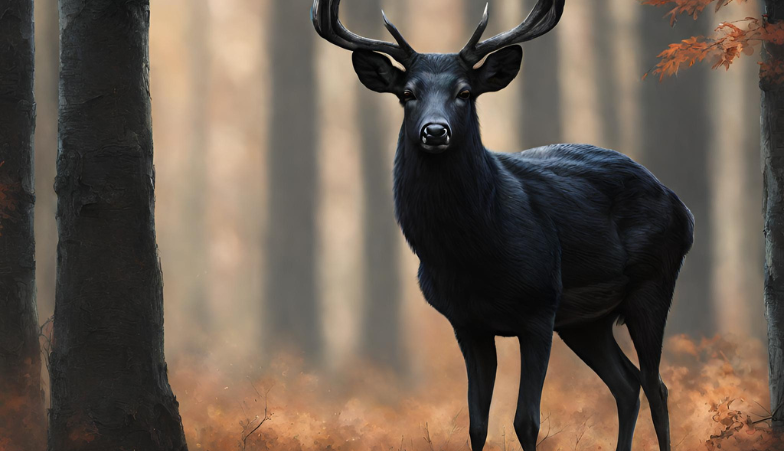Have you ever seen a deer as black as night? This rare sight is not a figment of imagination but a fascinating natural phenomenon known as melanism. Unlike the more common albino or piebald deer, melanistic whitetails are a rarity, shrouded in mystery and awe.
In this article, we’ll explore these animals and the science behind their unique coloration.
What Does It Look Like?
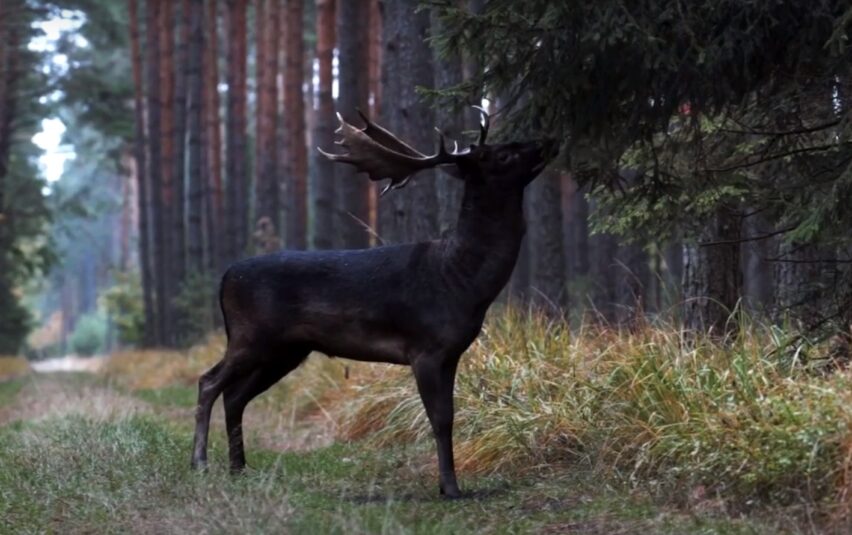
Melanism in deer, primarily in whitetails, is a rare genetic anomaly resulting from mutations in the MC1R gene. This mutation leads to the overproduction of melanin, the dark pigment responsible for coloration in animals and humans.
As a result, melanistic deer have a predominantly black coat, though some may exhibit normal coloring around the ventral area under the tail. This genetic variation is similar to the process that creates black panthers in big cats, where melanism provides a distinct coloration difference.
Research into the MC1R gene mutation in these animals helps biologists understand similar genetic processes in other species. Moreover, this melanism does not appear to affect their health or lifespan, making it a purely cosmetic variation.
Historical Records and Geographic Distribution
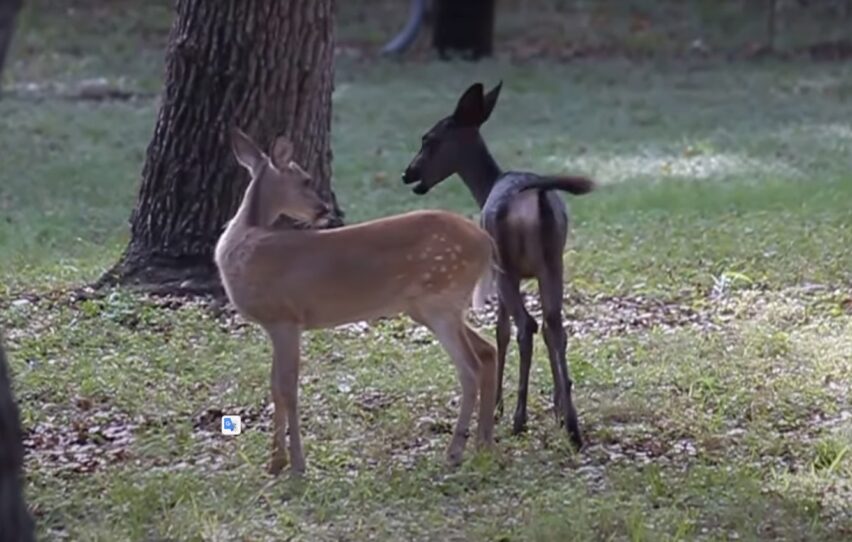
The phenomenon of melanistic whitetails first entered scientific records in 1929. Since then, these deer have been sporadically reported across various U.S. states, including Mississippi, Michigan, Virginia, Pennsylvania, Texas, and South Carolina.
Notably, the highest localized incidence of melanism has been observed in an 8-county region in Texas, specifically the Edwards Plateau Ecological Region. The distribution pattern suggests environmental factors may influence the occurrence of melanism.
Studies are ongoing to determine if specific ecological conditions favor the emergence of this trait. The sporadic nature of these sightings makes them a valuable subject for ongoing genetic and environmental research.
Coexistence with Normal Whitetail Deer
Melanistic and normal whitetail deer can coexist in the same area. Their interaction and cohabitation in the same ecosystem do not significantly affect the population dynamics of either group. Interestingly, the frequency of these animals in a population does not increase substantially even if a melanistic deer is harvested or passed over by hunters.
This indicates that melanism in these animals is a stable genetic trait that does not spread rapidly through populations. The genetic mechanism behind melanism ensures its rarity, maintaining the natural diversity within their populations. This balance in genetic diversity is essential for the health and resilience of deer populations.
Do They Have a Survival Advantage?
The reason for the high frequency of melanistic deer in certain regions, such as the Edwards Plateau, remains a subject of scientific curiosity. Some researchers speculate that the darker coat may offer a survival advantage in specific habitats, aiding in camouflage or heat retention.
However, this hypothesis is yet to be definitively proven. The dense forests and underbrush of these areas might provide a more suitable backdrop for the dark coat, offering better concealment from predators.
The darker fur could absorb more heat in colder climates, giving melanistic deer a slight advantage during winter. Future studies focusing on the survival rates of melanistic versus normal deer could shed light on this advantage.
The Rarity of Melanistic Whitetails
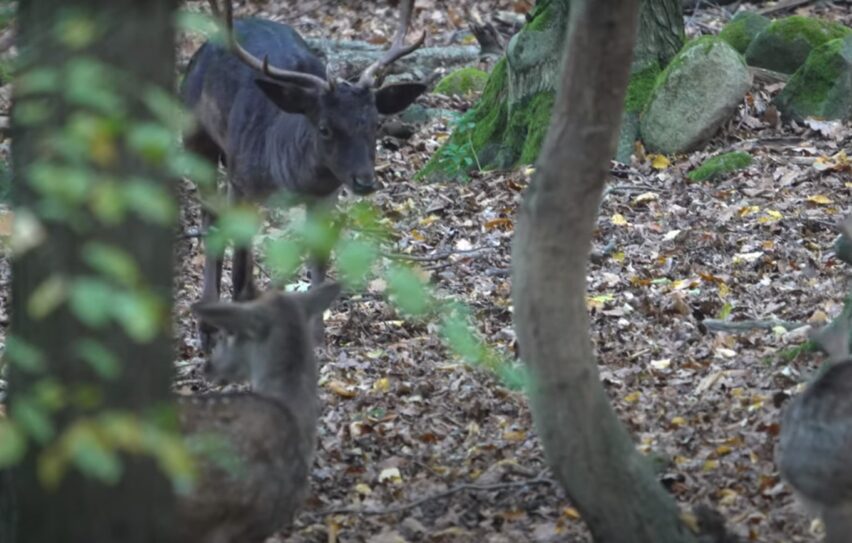
Melanistic whitetails are considered exceptionally rare, even among biologists who study various deer populations and anomalies. Their rarity adds to the mystique and allure of these creatures, making an encounter with one a memorable experience for wildlife enthusiasts.
Biologists continue to study these unique specimens to understand the underlying genetics and potential environmental triggers for melanism. The study of melanistic whitetails also contributes to broader conservation efforts, emphasizing the importance of genetic diversity in wildlife populations.
This rarity also makes these animals a subject of interest for educational and awareness programs in wildlife conservation. Despite their presence in various states, melanistic whitetails are a minuscule fraction of the deer population.
The occurrence of melanism is sporadic and unpredictable, making these animals a fascinating subject for both researchers and the general public. Their uniqueness also raises awareness about genetic diversity within animal populations.
The presence of melanistic deer in a region can become a point of interest for local communities, potentially aiding in conservation efforts. It also highlights the complex interplay of genetics and environment in shaping wildlife characteristics.
Impact on Deer Populations and Hunting
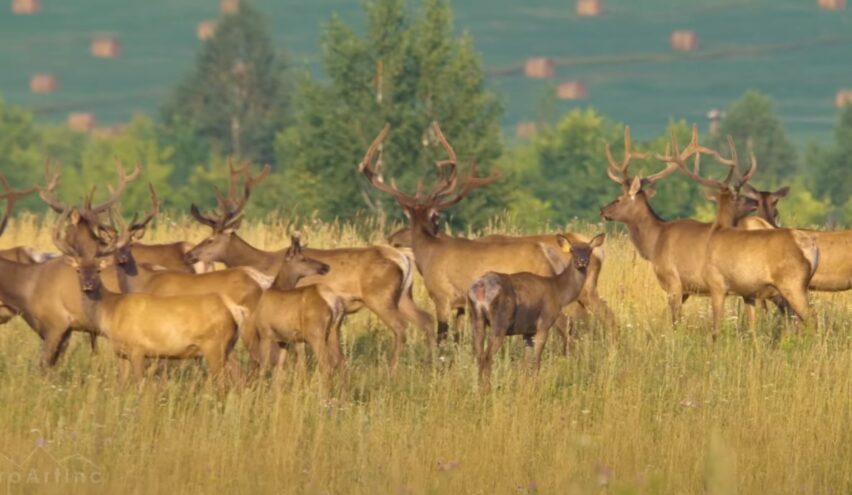
Melanistic whitetails, like their normally colored counterparts, are safe to consume if harvested. Melanism, as a genetic variation, does not pose a threat to the health or sustainability of deer populations. This ensures that melanistic deer can be integrated into wildlife management and hunting practices without concerns for negative impacts.
The meat of these animals is indistinguishable in taste and quality from that of standard whitetails, making them equally suitable for consumption. Their inclusion in hunting practices helps maintain a balanced approach to wildlife management and conservation.
Furthermore, the study of harvested melanistic deer provides valuable data for ongoing research into this rare genetic trait.
Hunting Implications

For hunters, encountering a melanistic deer is a rare and exciting opportunity. However, choosing to harvest or pass a melanistic deer does not significantly impact the frequency of this genetic anomaly in their population.
This allows hunters to make ethical decisions based on personal or conservation goals without affecting the occurrence of melanism in these animals. The rarity of these animals often makes them a coveted trophy, adding a unique aspect to the hunting experience.
Ethical hunting practices ensure that the harvesting of these rare animals is done responsibly, contributing to sustainable wildlife management. Additionally, the presence of melanistic deer in hunting areas can enhance the appeal and biodiversity of these ecosystems.
FAQs
Can melanistic traits be passed down to offspring in deer?
Yes, melanistic traits can be inherited. However, since melanism is a result of a specific genetic mutation, the likelihood of passing this trait depends on both parents’ genetics. If only one parent carries the gene, there’s a lesser chance of offspring being melanistic.
Are there any specific health issues associated with melanistic deer?
There are no known health issues unique to these animals. They generally have the same health and lifespan as non-melanistic deer. Melanism is primarily a cosmetic difference and doesn’t impact their physical well-being.
Is melanism in deer observed in species other than whitetails?
While melanism is most commonly reported in whitetail deer, it can theoretically occur in other species. However, such instances are exceedingly rare and not as well-documented as in whitetail deer.
How can one differentiate a melanistic deer from a very dark brown deer in the wild?
Melanistic deer have a distinct, uniform black coloration across most of their body, which is noticeably different from the dark brown color of a typical deer. In sunlight, they may appear to have a shiny or glossy coat due to the high melanin content.
Does the habitat of melanistic deer differ from that of typical whitetail deer?
Melanistic deer typically inhabit the same environments as regular whitetail deer. There’s no evidence suggesting that they prefer or thrive in different habitats. Their survival and lifestyle are more influenced by the general characteristics of their species rather than their coloration.
Have there been any successful conservation efforts specifically aimed at protecting melanistic deer?
Since melanistic deer are a naturally occurring genetic variant and not a separate species, conservation efforts are generally aimed at protecting deer populations as a whole. There are no specific conservation programs targeted solely at them, but they benefit from broader deer conservation and habitat protection efforts.
Summary
Melanistic whitetail deer are a rare and fascinating genetic anomaly in the deer population. Their unique black coat, caused by a mutation in the MC1R gene, sets them apart from their more commonly colored counterparts.
Despite their sporadic appearance across various U.S. states, they remain a small fraction of the deer population. The presence of these animals does not significantly impact the overall population dynamics or hunting practices. They are safe to consume and do not pose any health risks to humans or other deer.

